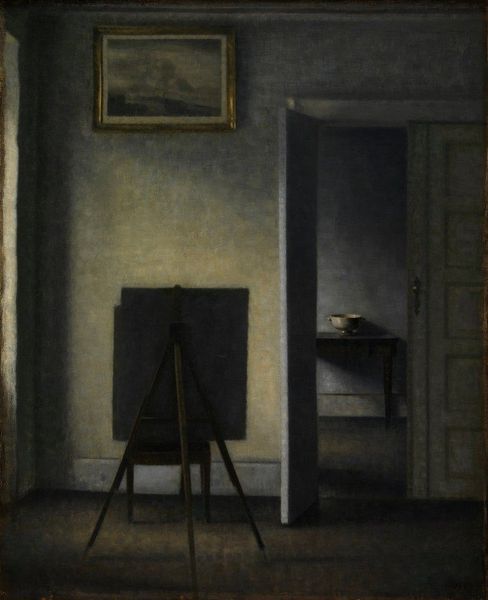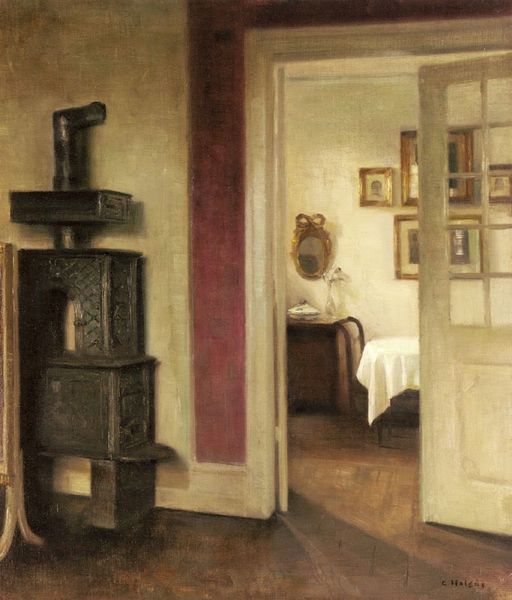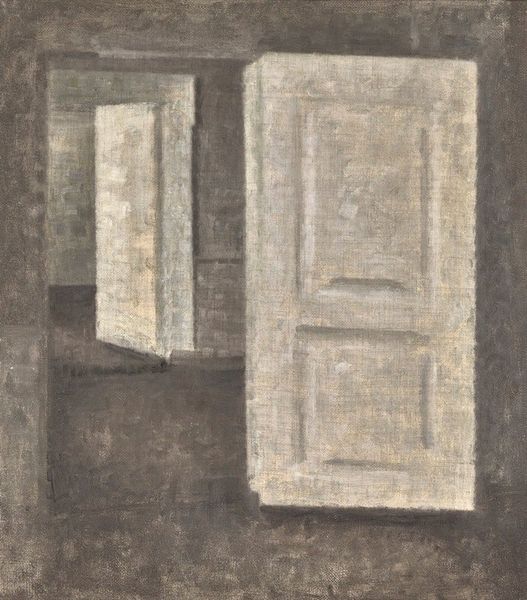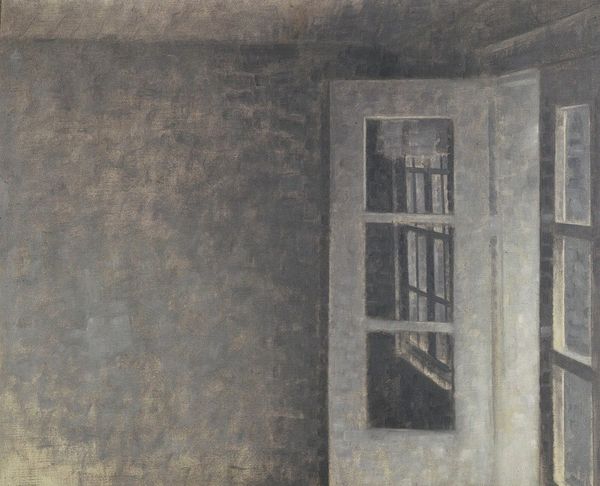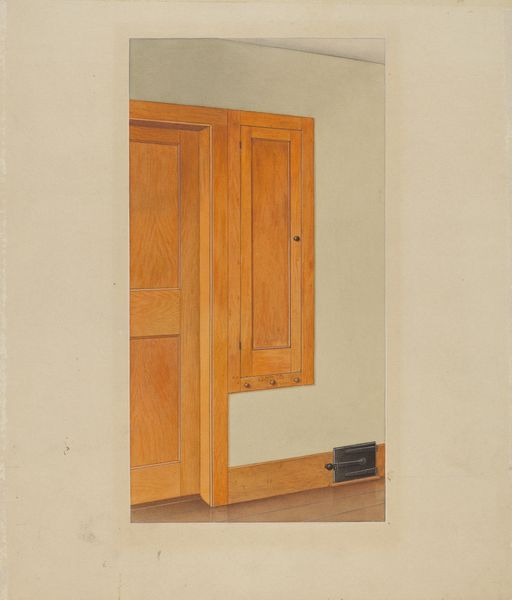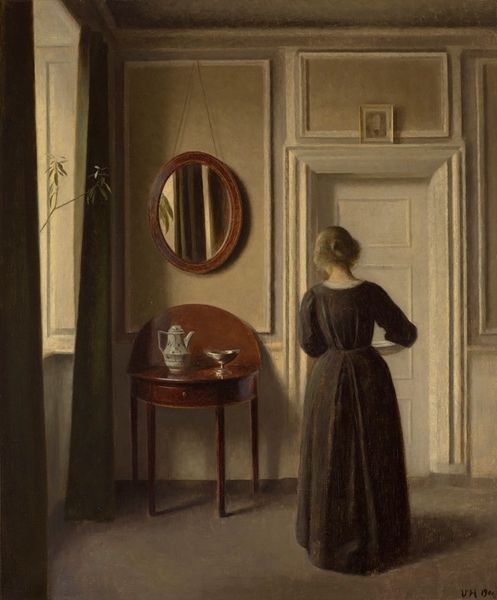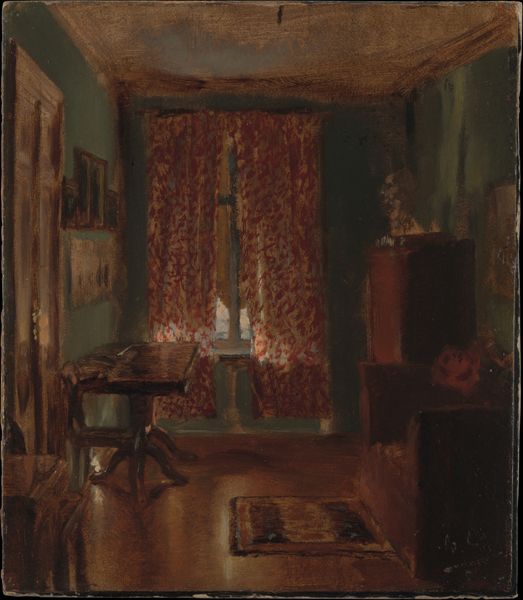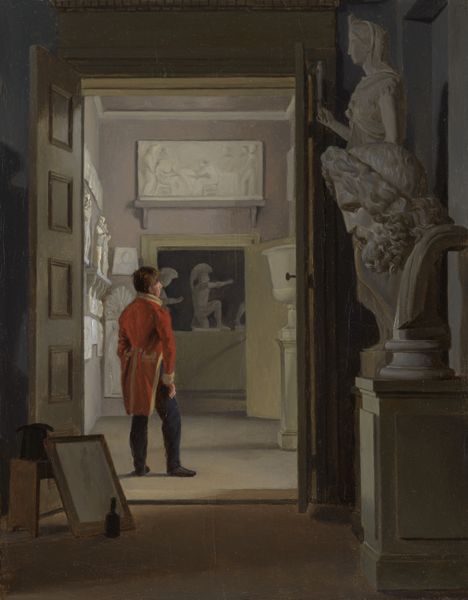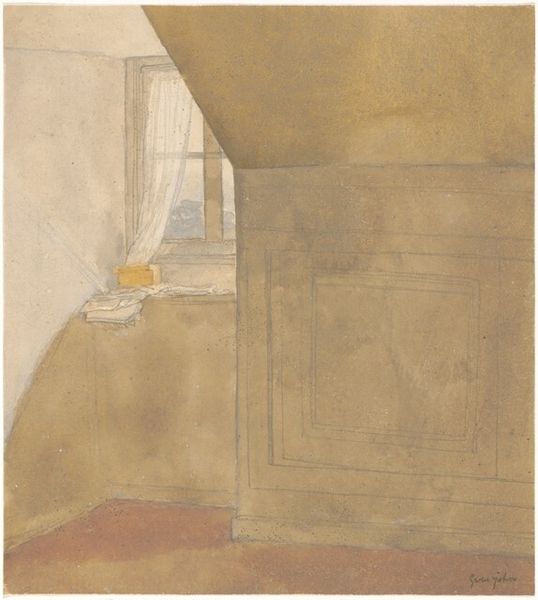
painting, oil-paint, canvas
#
painting
#
oil-paint
#
canvas
#
intimism
#
symbolism
#
realism
Dimensions: 84 cm (height) x 69 cm (width) (Netto), 98.4 cm (height) x 83.5 cm (width) x 8.6 cm (depth) (Brutto)
Vilhelm Hammershøi made this painting, Interior with the Artist's Easel, with oil on canvas. Just look at that subdued palette, those muted greys and browns. It’s all about atmosphere. There's a real process at play here, a kind of slow looking and layering. The surface is smooth, almost polished, but you can sense the delicate brushwork underneath. Hammershøi creates this quiet, almost eerie feeling, like time has stopped. Notice how the light falls on the back of the easel, that soft glow. It's as if the painting is breathing, inviting us into its stillness. Think about artists like Vermeer, who were also interested in capturing the light and quiet of interior spaces. There's something timeless about this piece, a sense of searching and contemplation. Hammershøi reminds us that art is an ongoing conversation, a way of seeing and feeling the world around us.
Comments
statensmuseumforkunst almost 2 years ago
⋮
The painting is one of those interiors for which Hammershøi is famous. The easel also makes a painting a variation on the theme "the artist and his motif", but without featuring the artist himself; Hammershøi wanted to avoid narratives in his paintings. Even in his own day Hammershøi became mainly known for his interiors. He would return to the subject over and over again with an almost uncanny tenacity, always trying out new effects. The paintings depict empty, ascetic, and eerily static rooms infused with a silent, tense atmosphere and with a mellow light falling in through the windows to gently touch the walls. The air has an almost physical texture to it, and at the same time the material objects in the scenes seem to dissolve, which means that everything takes on the same airy, vibrating quality. The colours are restricted to a narrow spectrum of greys and whites, but the wealth of nuance is tremendous.The interiors frequently feature a single woman, often with her back turned to us as in this painting. Regardless of pose, she always seems frozen and wrapped up in her own world. Life seems to have stopped, and not even an open door establishes contact to the world outside. The artist has obviously been working on a painting and has stepped away from it for a moment. This makes the painting a version on the theme The Artist and his Motif. It is, however, typical of Hammershøi to avoid painting himself into the scene; he did not want it to take on narrative aspects. Hammershøi’s interiors are indebted to Danish art from the first half of the 19th century and to Dutch 17th century art, but they stand apart from their predecessors with their unique, eerie atmosphere.
Join the conversation
Join millions of artists and users on Artera today and experience the ultimate creative platform.
statensmuseumforkunst almost 2 years ago
⋮
Hammershøi is best known for his many interiors. Here, he has painted a room from his Copenhagen home. There are no people in the painting, but the easel accentuates the artist’s own presence. Thus, the painting becomes a variation on the theme The Artist and his Subject, as the rooms of Hammershøi’s home served both as his favourite motif and as his studio. Even though he depicted the rooms many times, the paintings are always different; he would constantly vary the angle, the light, and try out new effects. A crucial aspect of all the paintings is the gentle light falling through the windows, creating a finely graded light on the walls. For the artist this provided the starting point for exploring an endless wealth of greys and whites.
